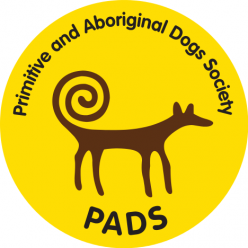Dingoes are the closest living relatives of the grey wolf (Canis lupus) and an ancient species phylogenetically distinct from domestic dogs and modern grey wolves (Crowther, Fillios, Colman, & Letnic, 2014). However, their genetic and phenotypic similarity to domestic dogs is a reason for their still debated taxonomic position as a distinct species, subspecies of grey wolf or feral domestic dog (Tatler et al., 2020).
While recent DNA studies suggest that dingoes may have lived in Australia for longer (Oskarsson et al. 2011), the earliest undisputed archaeological find of the dingo in Australia has been dated to 3,250 years ago (Balme et al. 2018). Conservative molecular dating based on mitochondrial DNA suggests that the lineages separated about 8300 years before present, probably outside Australia but within Oceania. The close relationship between dingoes and New Guinea Singing Dogs suggests that dingoes probably spread to Australia across the land bridge between Papua New Guinea and Australia (Cairns / Wilton, 2016). Recent DNA studies, for example, suggest that the animals entered Australia from Borneo and Sulawesi as far back as 5000 to 12,000 years ago (Zhang et al, 2018). Mitochondrial DNA data collected by scientists at the Royal Society even suggest that the dingo may have been common in Australia for up to 18,000 years, arriving naturally across a land bridge from Central Asia to Australia that connected the two continents during the Pleistocene epoch (Oskarsson et al., 2011).
The close relationship between dingoes and New Guinea dogs also suggests that dingoes spread into Australia across the land bridge between Papua New Guinea and Australia (Cairns & Wilton, 2016). Dingoes spread rapidly across the continent and soon occupied a variety of ecosystems, from alpine habitats to tropical rainforests and arid deserts (Fleming et al., 2001).
The dingo is Australia’s only native canid. There are at least two distinct ecotypes – the Alpine Dingo and the Desert Dingo, although another subtype, the Tropical Dingo, is thought to exist (Corbett, 1995; Corbett, 2006). Dingoes inhabit almost the entire Australian faunal range, with the exception of Tasmania. In alpine areas of Australia, dingoes are predominantly found with smaller ears, denser undercoat, more compressed build and an overall more Nordic physiology, whereas dingoes in desert and tropical forest regions are more leggy and often have a very light undercoat.
Dingoes are generalist predators that consume a variety of prey species within their range. Their prey range includes kangaroos, wallabies and wombats as well as rabbits, wild boar and the opossums, short-headed gliders, various insects and paradise fish, which are also native to Australia and New Guinea. They also feed marginally on livestock, primarily sheep and small cattle. Unlike village dogs, dingoes have lived without human food for thousands of years and can live completely independently of humans, even though they – like wolves and other wild canids – sometimes feed on lifestock animals.
Dependence on humans is a criterion of domestication that is not met by dingoes. Although some studies have shown the ability of free-ranging dogs to kill and eat wild animals (Kuuk and Snell,1981, Campos et al.,2007), the majority of studies have highlighted the tendency of dogs to feed primarily on human food such as livestock and rubbish (Butler and du Toit,2002, Butler et al.,2004, Vanak and Gompper,2009, Echegaray and Vilà,2010) – dingoes, on the other hand, feed primarily on wild animals they capture themselves.
Not only does the Australian wild dog’s diet, which – unlike that of wild domestic dog populations – consists largely of animals it has hunted itself rather than human waste, distinguishes it from feral domestic dogs, but also its typical wild canid morphology (Smith, 2018) and its extraordinary flexibility of limbs (Smith, 2015). The morphological features of the dingo, most notably its broad skull compared to its narrow thorax, as well as its increased cranial/brain volume, remain present even after hybridisation with domestic dogs (Parr et al., 2016).
A characteristic feature of the dingo is the ability to open the jaw exceptionally wide. The teeth are larger than those of dogs of similar size. Dingoes are able to turn their ears independently and rotate them entirely so that the pinna faces the back, allowing the best possible perception of environmental stimuli. Dingoes are extremely flexible; unlike domestic dogs, they can rotate their paw joints and subluxate their hips, enabling them to climb trees and scale rock faces. Their limbs are double jointed, the neck can be turned 180 degrees in any direction, which is impossible for dogs (Australian Dingo Foundation).
Dingoes are mostly monogamous canids that raise their offspring communally and with the support of yearlings from the previous year (Asa & Valdespino, 1998). As highly socially organised animals, they show alloparental behaviour – just like wolves and some aboriginal dogs, e.g. INDogs – which means that related animals help with pup rearing, for example by aunts or already sexually mature daughters assisting in suckling the pups (Riedman, 1982).
Mating behaviour is similar to that of the New Guinea dingo. Dingoes raise their pups in burrows, so-called “dingo dens”, which are sometimes shared with other dingoes. Up to 18 pups may be raised in such underground dens (Catling et al. 1992; Corbett 2001; Allen et al. 2015). The time of reproductive maturity also varies: in domestic dogs, sexual maturity occurs between 6 and 12 months of age in both male and female individuals; in some breeds, puberty may be delayed until 2 years of age; females usually reach sexual maturity between 8 and 18 months of age. Dingoes, on the other hand, are often not ready to reproduce until 2 or 3 years of age (Catling et al., 1992; Corbett 2001; Smith 2015).
Text by Hana Sanders-Høstløvet
